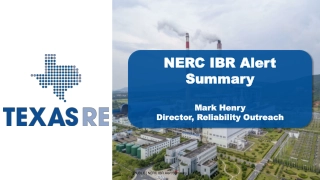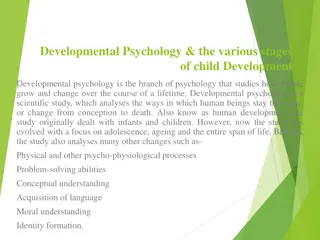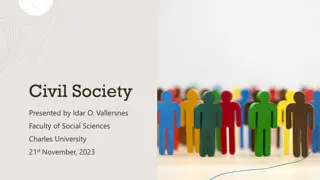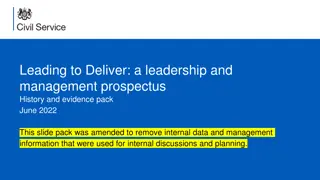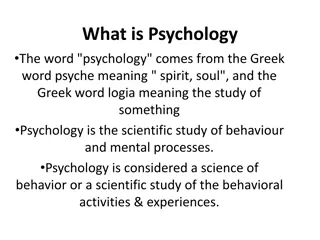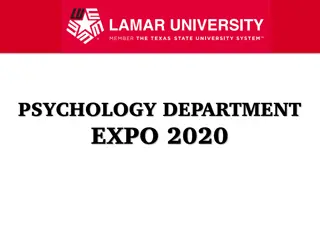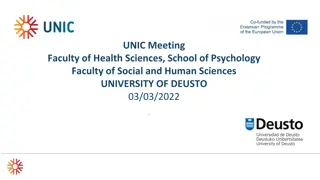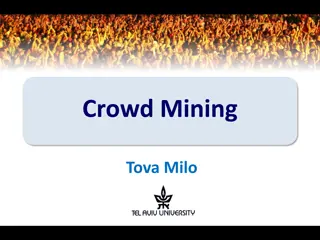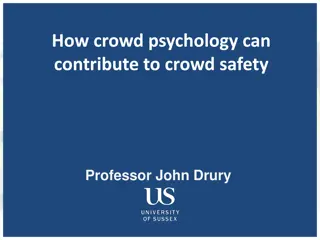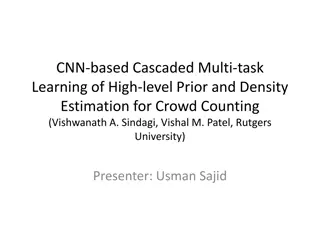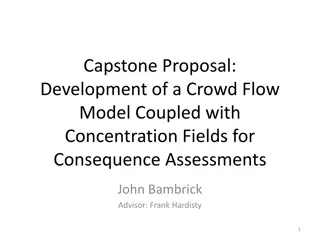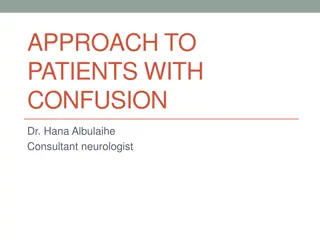Understanding Crowd Psychology in Civil Disturbances: Insights from Expert Dr. Tamara D. Herold
Explore the dynamics of crowd behavior in civil disturbances through the expertise of Dr. Tamara D. Herold, discussing useful theories, policing tactics, and strategies for de-escalation to ensure safety and protect freedoms during protests.
Download Presentation

Please find below an Image/Link to download the presentation.
The content on the website is provided AS IS for your information and personal use only. It may not be sold, licensed, or shared on other websites without obtaining consent from the author. Download presentation by click this link. If you encounter any issues during the download, it is possible that the publisher has removed the file from their server.
E N D
Presentation Transcript
Crowd Psychology and Civil Disturbances Ohio Collaborative Community Police Advisory Board Meeting September 9, 2020 Dr. Tamara D. Herold (formerly Madensen) Associate Professor, Graduate Director University of Nevada, Las Vegas
Crime Science Background Places Design Management Crime Triangle Place
The Myth of the Madding Crowd Human behavior is influenced by cues present in the social and physical environment. Advances in social science theory 3
4 General Crowd Reactions Rowdy - Disorderly Hostile / Violent Diminished Inhibition Collective Violence Strong tendency to explore disorderly behaviors Intense provocation for violent group behavior Consensual Compliance Accepted Helplessness Calm - Peaceful Resigned - Submissive Inclination toward prosocial behavior Volatile obedience to authoritative force
Useful Theories Elaborated Social Identity Model Aggressive tactics encourage aggressive crowd behavior
Useful Theories Reactance Theory The you must/ you won t approach promotes resistance
Useful Theories Coercion Theory Predictability reduces tension and promotes compliance
Protect Freedoms De-escalate Situations Primary goals when managing protests Policing Tactics Ensure Safety Establish Confidence
Disarming Reasonable 2 1 RDFC Interaction Model Limit use of force, coercion, and intrusiveness Restrict the fewest freedoms possible Focused Consistent 3 4 Target only harmful behaviors and conditions Deploy predictable and unbiased tactics
RDFC Interaction Model DIMENSION POLICERESPONSE (FROMPUBLIC SPERCEPTION) is lawful and necessary to prevent harm. Reasonable does not use avoidable force, coercion, or intrusiveness. Disarming avoids indiscriminate use of force against crowds. Focused deters harm and reinforces positive behaviors. Consistent Police actions that build public support and trust
Training Communication Critical Elements Policy and Procedure Arrests Preparation Use of Force Coordination De-escalation


